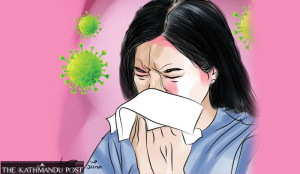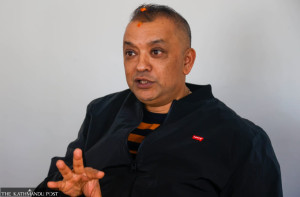Health
Health officials seek community engagement for dengue control
Over 1,500 people from 73 districts have tested positive for the dengue virus since January.
Post Report
An expert team comprising entomologists was shocked to discover larvae of Aedes aegypti and Aedes albopictus mosquitoes, the primary carriers of the dengue virus, in government offices during the dengue search-and-destroy drive carried out about two years ago.
They not only found the larvae of the virus-spreading vector, but also several staffers infected with the deadly virus.
“We found mosquito larvae in the stagnant water in discarded tyres, plastic glasses, flower pots and other containers,” said Professor Murari Lal Das, an entomologist at the BP Koirala Institute of Health Sciences, Dharan. “Not only in the government offices, breeding grounds of dengue-spreading mosquitoes were found in schools, hospitals, and private houses.”
Experts say they have not noticed much change in public behaviour in the past two years. The only change they see is the spread of virus-spreading vectors throughout the country. They warned that without the active participation of the general public, it is impossible to contain further spread of deadly diseases.
“Everyone must shoulder the responsibility of controlling the dengue infection,” said Das. “We will continuously suffer from the dengue infection if we only rely on health workers to contain the spread of the virus. It is impossible for health workers to reach every household to discard stagnant water.”
Dengue is a viral disease transmitted by female Aedes aegypti and Aedes albopictus mosquitoes. According to the World Health Organisation, the same vector also transmits chikungunya, yellow fever, and the Zika virus.
So far, 1,576 people from 73 districts have tested positive for the dengue virus since January. The deadly virus has not yet been reported in four out of 21 mountainous districts—Rasuwa of Bagmati province, Manang of Gandaki province, and Humla and Dolpa of Karnali province.
In 2024, 15 people died, and 41,865 others were infected as the virus spread to 76 districts. In 2023, 88 persons died and more than 54,000 were infected by the virus, which had spread to all 77 districts. At the time, hospitals in Kathmandu Valley were overwhelmed with dengue patients, and pharmacies had run out of paracetamol, the most widely used medicine to treat fever.
Experts say reported cases may represent only a small fraction of the true scale of infection, as around 90 percent of the infected people are asymptomatic, and many deaths and infections often go unreported.
Many people infected with dengue show mild symptoms, which do not need any treatment or can be managed with paracetamol at home.
Since dengue became endemic in Nepal years ago, meaning people get infected throughout the year, health officials no longer classify it as an outbreak of a deadly virus.
Epidemiologists as well as virologists say that despite thousands of people getting infected and scores dying from the disease, authorities have failed to respond with proper measures. They believe that this lackadaisical approach is responsible for the spread.
Meanwhile, officials at the Epidemiology and Disease Control Division said that they have been working to prepare a multi-year, multi-stakeholder action plan to control the growing burden of the dengue infection.
“We have already held discussions with multiple stakeholders, including representatives of the Federation of Nepalese Chambers of Commerce and Industry, the Federation of Nepali Journalists, the Private and Boarding Schools’ Organisation Nepal and health workers at local governments in the Kathmandu Valley,” said Dr Gokarna Dahal, chief of the Vector Control Section at the division. “Without active community participation and public awareness, it is impossible to contain the spread of the virus.”




 8.12°C Kathmandu
8.12°C Kathmandu














